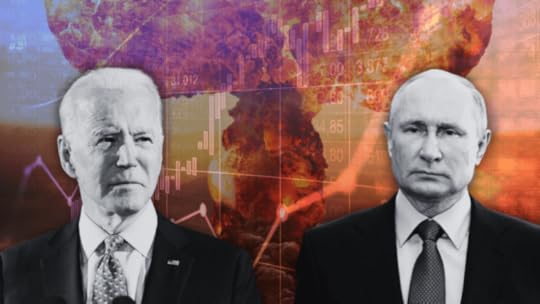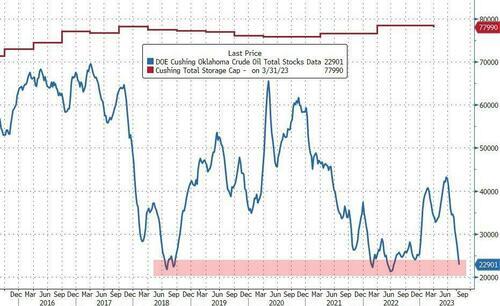Steve Bull's Blog, page 101
September 28, 2023
Canada Launches UN Declaration Targeting Online ‘Disinformation’
Foreign Affairs Minister Melanie Joly has launched a United Nations declaration that calls for action to protect what it calls “information integrity” and to tackle “disinformation.”
Ms. Joly launched the Global Declaration on Information Integrity Online jointly with Dutch Foreign Affairs Minister Hanke Bruins Slot during the U.N. General Assembly in New York on Sept. 20.
“Information integrity is essential to help ensure the strength of democratic processes and to protect fundamental rights,” says a joint statement by Canada and the Netherlands.“The erosion of information integrity, including the propagation of disinformation, weakens the strength of democratic engagement.”
In a speech on Sept. 20, Ms. Joly said the declaration is a “concrete step toward establishing global norms on disinformation, misinformation, and information integrity,” the National Post reported.Speaking to the U.N. on the same day, Ms. Bruins Slot said the emerging online environment makes it difficult to determine what is and what is not truthful.
“Every day, the world is flooded with disinformation and misinformation. Rapid advances in technology—particularly generative AI—make it more and more difficult to tell fact from fiction,” she said.
Canada, the United States, the United Kingdom, Germany, Australia, Japan, and South Korea are among the 30 countries that have signed the declaration.
The declaration promotes concepts such as respect for “the right to freedom of opinion and expression, and the freedom to seek, receive, and impart information.”It says signatories need to “take active steps to address misinformation and disinformation targeted at women, LGBTIQ+ persons, persons with disabilities and Indigenous Peoples.”
…click on the above link to read the rest…
September 27, 2023
Is World War III About to Start? Part I: Drift Toward War

Read Part 2 of this series here.
It is likely that billions of people around the world view the conflict in Ukraine as a proxy war being waged by the U.S. against Russia. US President Joe Biden has pledged to aid Ukraine’s pursuit of victory “for as long as it takes,” without defining what the end state might be. Russian President Vladimir Putin has interpreted U.S. intentions to mean a fight “to the last Ukrainian.”
Anyone with a discernible pulse is aware of the danger that the conflict could escalate into a conflagration large and destructive enough to morph into World War III. The threshold would likely be crossed once nuclear weapons were unleashed. The military doctrines of all nuclear powers stipulate that such an attack would justify an in-kind response, though without always ruling out the same for lesser provocations of a potentially existential nature.
President Biden has said “the world faces the biggest risk of nuclear Armageddon since the 1962 Cuban Missile Crisis.” The context of Biden’s statement came a month earlier on September 21, 2022, when Putin warned the West he was not bluffing when he said he would be ready to use nuclear weapons to defend Russia against what he said was “nuclear blackmail.” Earlier, in an April 21, 2021, speech, Putin said:
We really do not want to burn bridges. But if someone mistakes our good intentions for indifference or weakness and intends to burn or even blow up these bridges, they must know that Russia’s response will be asymmetrical, swift, and tough. Those behind provocations that threaten the core interests of our security will regret what they have done in a way they have not regretted anything for a long time.
…click on the above link to read the rest…
September 26, 2023
War of Economic Corridors: the India-Mideast-Europe ploy
The India-Middle East-Europe transportation corridor may be the talk of the town, but it will likely go the way of the last three Asia-to-Europe connectivity projects touted by the west – to the dustbin. Here’s why.
 Photo Credit: The Cradle
Photo Credit: The CradleThe India-Middle East-Europe Economic Corridor (IMEC) is a massive public diplomacy op launched at the recent G20 summit in New Delhi, complete with a memorandum of understanding signed on 9 September.
Players include the US, India, UAE, Saudi Arabia, and the EU, with a special role for the latter’s top three powers Germany, France, and Italy. It’s a multimodal railway project, coupled with trans-shipments and with ancillary digital and electricity roads extending to Jordan and Israel.
If this walks and talks like the collective west’s very late response to China’s Belt and Road Initiative (BRI), launched 10 years ago and celebrating a Belt and Road Forum in Beijing next month, that’s because it is. And yes, it is, above all, yet another American project to bypass China, to be claimed for crude electoral purposes as a meager foreign policy “success.”
No one among the Global Majority remembers that the Americans came up with their own Silk Road plan way back in 2010. The concept came from the State Department’s Kurt Campbell and was sold by then-Secretary Hillary Clinton as her idea. History is implacable, it came down to nought.
And no one among the Global Majority remembers the New Silk Road plan peddled by Poland, Ukraine, Azerbaijan, and Georgia in the early 2010s, complete with four troublesome trans-shipments in the Black Sea and the Caspian. History is implacable, this too came down to nought.
…click on the above link to read the rest…
Oil Can Push Higher As Cushing Stockpiles Collapse
Crude prices will likely get a fresh boost this week, as stockpiles at the key US storage hub in Cushing, Oklahoma, risk collapsing to the lowest level (aka “tank-bottoms”) in almost a decade.
Such a move would embolden those aiming for a return of $100 oil by year-end.
 Cushing storage tanks
Cushing storage tanksCushing matters. Being the delivery point for the WTI futures contract, the rise and fall of the holdings is among the market’s most closely followed trends. So far in 3Q, inventories have slumped by ~47% to 22.9m barrels. That’s the lowest since July 2022 and that’s not far away from the 2014 lows.
If that comes to pass, it’d highlight the scramble for near-term supplies as the global market tightens up.
Estimates come on Tuesday, followed by the official print the next day.
Report: majority of carbon offset projects globally are “likely junk”
Analysis found that 39, or 78%, of the 50 environmental projects were categorised as “likely junk or worthless” due to one or more “fundamental failing”.
 Reforestation is one of the most common projects traded within the VCM. Credit: Richard Whitcombe via Shutterstock.
Reforestation is one of the most common projects traded within the VCM. Credit: Richard Whitcombe via Shutterstock.The “vast majority” of environmental projects most commonly used within the voluntary carbon market (VCM) to offset greenhouse gas (GHG) emissions seem to have “fundamental failings” and cannot be relied upon to tackle global warming, according to a joint investigation from the Guardian and non-profit climate watchdog Corporate Accountability.
The investigation analysed the top 50 emission offset projects, selected because they have sold the most carbon credits within the global VCM, and found that most of them exaggerate climate benefits and underestimate the potential harm caused by the project’s activity.
The most popular projects traded globally include forestry schemes, hydroelectric dams, solar and wind farms, waste disposal and greener household appliance schemes across 20 countries, most of which have developing economies. The data comes from Allied Offsets, the world’s biggest and most comprehensive emissions trading database, which aggregates information about projects traded within the VCM from their inception.
The analysis found that 39, or 78%, of the 50 projects were categorised as “likely junk or worthless” due to one or more “fundamental failing” that undermines its alleged emissions offsetting power.
Eight others, or 16%, look “problematic”. There is evidence to suggest that they may have at least one fundamental failing and could therefore be “junk”.
The effectiveness of the remaining three projects could not be assessed properly or classified definitively, largely due to a lack of available public, independent information. The analysis also found that $1.16bn worth of carbon credits have been traded so far from those projects classified as “likely junk or worthless”.
…click on the above link to read the rest…
Researchers: We’ve Underestimated The Risk of Simultaneous Crop Failures Worldwide
The risks of harvest failures in multiple global breadbaskets have been underestimated, according to a study Tuesday that researchers said should be a “wake up call” about the threat climate change poses to our food systems.
Food production is both a key source of planet-warming emissions and highly exposed to the effects of climate change, with climate and crop models used to figure out just what the impacts could be as the world warms.
In the new research published in Nature Communications, researchers in the United States and Germany looked at the likelihood that several major food producing regions could simultaneously suffer low yields.
These events can lead to price spikes, food insecurity and even civil unrest, said lead author Kai Kornhuber, a researcher at Columbia University and the German Council on Foreign Relations.
By “increasing the concentration of greenhouse gases, we are entering this uncharted water where we are struggling to really have an accurate idea of what type of extremes we’re going to face,” he told AFP.
“We show that these types of concurring events are really largely underestimated.”
The study looked at observational and climate model data between 1960 and 2014, and then at projections for 2045 to 2099.
Researchers first looked at the impact of the jet stream – the air currents that drive weather patterns in many of the world’s most important crop producing regions.
They found that a “strong meandering” of the jet stream, flowing in big wave shapes, has particularly significant impacts on key agricultural regions in North America, Eastern Europe and East Asia, with a reduction in harvests of up to seven percent.
The researchers also found that this had been linked to simultaneous crop failures in the past.
…click on the above link to read the rest…
Oil Exploration Grows But Discovered Volumes Fall To New Lows
Spending on conventional oil and gas exploration is rebounding and expected to top $50 billion this year, the highest since 2019, but operators are still waiting for the results they had hoped for. Rystad Energy research shows that despite the rising investments, discovered volumes are falling to new lows.
Our estimates show that in the first half of 2023, explorers found 2.6 billion barrels of oil equivalent (boe), 42% lower than the first half of 2022 total of 4.5 billion boe. Fifty-five discoveries have been made, compared to 80 in the first six months of last year. This means discoveries in 2023 have averaged 47 million boe, lower than the 56 million boe per discovery for the same period in 2022.
The exploration and production (E&P) industry is in a transitionary period, with many companies exercising increased caution and shifting their strategies to target more profitable and geologically better-understood regions. This strategic shift and the failure of several critical high-potential wells are contributing to the precipitous drop.
In the hunt for new resources, exploration companies are prioritizing the offshore sector, trying to capitalize on underexplored or frontier areas to unlock new volumes through high-risk, higher-cost offshore developments. The offshore industry accounted for about 95% of exploration spending this year to date but only about two-thirds of discovered volumes.
“Upstream companies are facing a period of uncertainty. They are eager to capitalize on the increased demand for fossil fuels and find additional resources, but recent results have been lackluster…
…click on the above link to read the rest…
September 23, 2023
The Coming Ukraine Collapse and the “Rebuilding” Headfake
Marguerite Yourcenar salvaged one of the finest lines in all literature from the first version of her masterpiece Memoirs of Hadrian: “I begin to discern the profile of my death.” We are approaching that point with Ukriane, not just its military campaign, but also its economy. That baked-in collapse has been camouflaged by the bizarre pretense that there will be a huge reconstruction push, even more absurdly, funded by private sector interests. One has to think that the “rebuilding” patter is part of the cover for the fact that Project Ukraine is a lost cause.
At the end of this post, we are embedding a chapter on the devastation in Russia in the 1990s to give an idea of what the downside in Ukraine might look like.1 Recall that even though the USSR had suffered from underinvestment in many sectors, it still had ample resources and considerable manufacturing capacity. It did not, as Ukraine has, suffer from considerable infrastructure destruction, a fall in its population to half its former level, through flight, annexation, and death in the war, and the loss of some of its most economically developed areas.
The war is now entering a critical phase, with experts now warning of a breakdown of the Ukraine military in the not-terribly-distant future or using formulations that amount to the same thing. Scott Ritter had predicted that outcome for late summer-fall based on Ukraine’s dwindling missiles supplies, but that horizon has been extended by the US supply of cluster munitions, whose use is considered a war crime by many countries.
An indicator of the increased willingness to admit the inevitable military disintegration was coming is the early September article, How Ukraine’s Heroic Stand Against Russia Could Collapse Into Failure by Daniel Davis in 19FortyFive…
…click on the above link to read the rest…
The Rise of Huxwell
Two dystopias are better than one…
 = HUXWELL
= HUXWELLNoam Chomsky stopped just one rung shy of perfection with his illuminating book, Manufacturing Consent, about how commercial media work as extensions of government and corporate power to manufacture the consent of the masses. Likewise, Matt Taibbi’s title, Hate, Inc. is a near-perfect indictment of cable and digital news profit models that manufacture and prioritize enmity to the exclusion of the truth and the common good.
Both works fall just one rung shy of perfection, however, not because they aren’t impressive examples of applied critical thought and insight, but because neither consent nor hate are the primary products of commercial media. Rather, they are toxic byproducts of a commercial mass media whose primary product is addiction…

“The effect of mass media is not to elicit belief but to maintain the apparatus of addiction.” — Christopher Lasch
In the early 21st century, we turned the corner from a society in which addiction was the exception to the rule to a society in which addiction became the rule. By 2004, still some years before social media, the smartphone, and streaming media secured their reputations as history’s most perfect narcotics, the average American — according to the Ball State University Middletown Media Studies report (the first large-scale observational study of American media consumption habits) — was already consuming more than eleven hours of media each and every day.
Concurrently, TV Everywhere, the commercial imperative behind the trillion-dollar campaigns for high-speed bandwidth and streaming HDTV, was ordained as the latest media industry mantra — part of an all-hands-on-deck digital blitzkrieg to normalize late-stage addiction.
Since then, hundreds of studies, articles, books, and documentaries have confirmed what anyone with a smartphone, social media account or a teenager already knows or suspects: we are a nation of media addicts — by design. We are, per Stanford addiction researcher Dr. Anna Lembke, a Dopamine Nation…
…click on the above link to read the rest…
Governments Start Calling For Price Controls – Rationing And CBDCs Come Next

Last month in the middle of the surreal “Bidenomics” hype I published an article titled ‘Nothing Is Over: Inflation Is About To Come Back With A Vengeance.’ I outlined the misconceptions surrounding CPI and how it is not an accurate model for the effects of inflation. I also noted that the index had been manipulated downwards by Joe Biden as he flooded the market with oil from the strategic reserves. Because so many elements of the CPI are connected to energy, Biden had created an artificial drop in CPI using this strategy.
I argued that as the strategic reserves ran out and Biden lost his leverage, CPI would rise again and prices on a number of necessities would climb. This is happening now, with the biggest jump in CPI in 14 months and gas prices clawing back towards all-time highs.
Inflation is not going away anytime soon, but the bigger issue at hand is who benefits most from inflation and rising prices? The answer might be obvious to some but many people are oblivious to the root cause of inflationary dysfunction and often see it as a consequence of random economic chaos rather than a product of clever engineering. The truth is, banking oligarchs and political authorities revel in the inflationary tidal wave because it is a perfect opportunity to institute far reaching socialist controls over resources.
In most cases central bankers are the primary culprits behind the creation of an inflationary event, and the word “creation” best applies because it is nearly impossible for overt inflation to occur without them. While money supply is not the only factor when dealing with inflation (sorry purists, but there are indeed other causes), it is the most important…
…click on the above link to read the rest…




